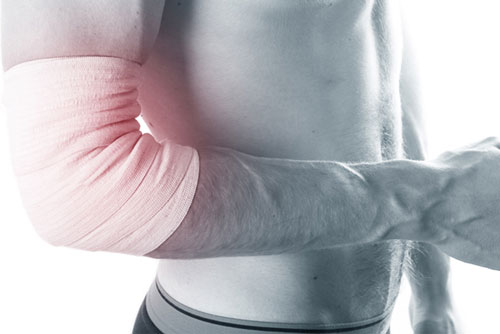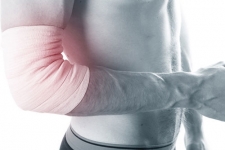
The elbow joint is where the two bones in the forearm – that being the radius (which is on the thumb side of the arm) and the ulna (on the pinky side) – meet up with the humerus, which is the long bone of the upper arm. The lower end of the humerus flares out into two rounded protrusions, which are called “epicondyles”, and this is where muscles attach to bone. The upper end of the ulna also has two protrusions – the olecranon (which is what creates the “point” of your elbow) and the coronoid process. These particular protrusions fit into two corresponding fossas (otherwise known as depressions) –the olecranon fossa and the coronoid fossa – which are located at the lower end of the humerus and work together to form the humeroulnar joint.
The humeroulnar joint is what we typically think of as the elbow joint, as it is the joint that allows for the bending and straightening of the arm. However, there are two additional joints that make up the elbow as well, and they are:
The humeroradial joint – this is where the humerus and radius meet, and also allows for the bending and straightening of the arm. However, it’s also involved in supination and pronation, which is the motion of turning ones hand over so the palm faces either up or down.
The proximal radioulnar joint – this is where the radius and ulna meet and, while it’s not involved in the bending of the arm, it does allow for the rotation of the lower arm.
There is cartilage in the elbow, too (although it is thinner than that of weight bearing joints, like knees and hips). It appears at the ends of the bones – where the meet to form the joints – and works to absorb shock and allows the bones to glide smoothly against each other.
Aside from bone, there are a multitude of other structures that work to form this joint, such as ligaments, tendons, and muscles.
Ligaments are tough bands of connective tissue that hold the bones together. The medial collateral ligament runs along the inside of the elbow and the lateral collateral ligament runs along the outside of the elbow. A third major ligament – known as the annular ligament – circles the head of the radius which, in turn, holds it against the humerus. The ligaments also work to form a capsule around the joint that’s lined with synovium – a smooth membrane. The synovium creates a viscous liquid – known as synovial fluid – which lubricates the joint.
There are also several muscles that surround the elbow – some of which are responsible for bending and straightening (those would be the triceps, located at the back of the upper arm, and the biceps, located at the front of the upper arm), as well as allowing for wrist and finger movement (the flexors attach to the inside of the elbow and enable bending of the wrist and fingers, and the extensors, which attach to the outside of the joint and allow for the straightening of the wrist and fingers).
Now, if ligaments hold the bones together, what holds the muscles to the bones? Tendons. There are several tendons that connect the muscles and bones of the elbow, with the primary ones being the biceps tendon (which attaches the biceps to the radius, and allows for the forceful bending of the elbow), and the triceps tendon (which attaches the triceps to the ulna, thereby making it possible to forcefully straighten your elbow).
Clearly, the elbow is comprised of more than just the “funny bone”! Check back over the coming weeks as we explore some of the more common elbow ailments as well as treatment options.
source: arthritistoday.org

